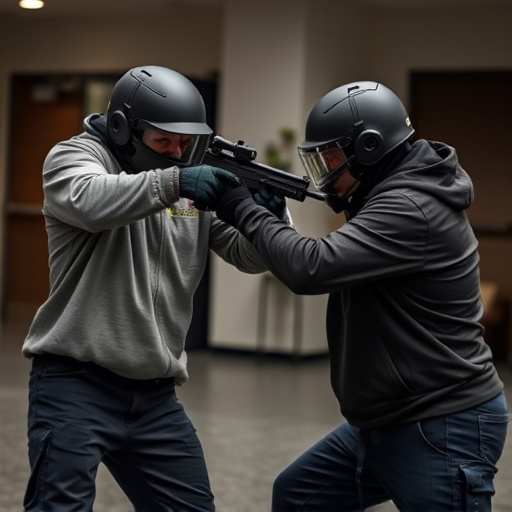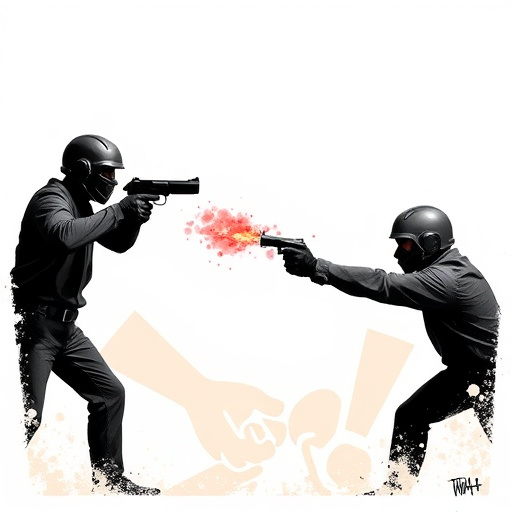Pink Stun Gun’s Disable Pin Safety: Uncovering Concealed Threats
In an era where personal safety is paramount, detecting concealed weapons like the pink stun gun wit…….
In an era where personal safety is paramount, detecting concealed weapons like the pink stun gun with a disable pin safety feature has become challenging. Traditional methods are ineffective for non-metallic devices, leading to inefficient manual searches and visual identification. This presents a significant issue for law enforcement when confronting compact, unassuming stun guns that use advanced technologies. Innovative solutions, such as modern stun devices with built-in disable pin mechanisms, offer quick inactivation features, encouraging responsible ownership and providing users with control during self-defense scenarios. The pink stun gun, with its discreet design and safety feature, serves as an effective deterrent while giving owners crucial time to react.
In today’s diverse and dynamic world, addressing concealed weapon detection is a paramount concern for law enforcement and personal safety advocates. This article delves into the specific challenges posed by stun guns, focusing on the unique features of the Pink Stun Gun with Disable Pin Safety. We explore the current landscape of detection methods, identify potential concerns and challenges, and propose proactive measures to bridge existing gaps in stun gun detection, ensuring enhanced security for all.
- Understanding Concealed Stun Gun Detection: The Current Landscape
- The Unique Features of the Pink Stun Gun with Disable Pin Safety
- Potential Concerns and Challenges in Detecting Hidden Stun Guns
- Proactive Measures to Address Stun Gun Detection Gaps
Understanding Concealed Stun Gun Detection: The Current Landscape

In today’s world, where personal safety is a top priority, concealed stun gun detection has become an increasingly important topic. The current landscape of stun gun technology presents a unique challenge—while self-defense tools like the pink stun gun with disable pin safety feature offer individuals peace of mind, detecting their presence can be difficult for security personnel. This is particularly concerning in high-risk areas such as airports, concerts, and crowded public spaces.
Current detection methods rely heavily on manual searches and visual identification, which are time-consuming and not always effective. Advanced technologies like metal detectors have limited success with stun guns due to their non-metallic components. As a result, there is a pressing need for innovative solutions that can accurately identify these devices while maintaining privacy and efficiency.
The Unique Features of the Pink Stun Gun with Disable Pin Safety

The Pink Stun Gun with Disable Pin Safety feature stands out in a crowded market due to its innovative design and enhanced security measures. This stun gun is not just a stylish accessory; it offers a unique self-defense mechanism that sets it apart from traditional models. The disable pin safety feature is a game-changer, providing users with an extra layer of control and peace of mind.
This advanced functionality allows the user to quickly immobilize the device if needed, ensuring that only authorized individuals can activate it. The pink color, often associated with safety and innocence, offers a subtle yet powerful statement, indicating that this stun gun is not just a tool but a responsible choice for personal protection. Its compact size makes it easily concealable, providing users with a sense of security without drawing excessive attention.
Potential Concerns and Challenges in Detecting Hidden Stun Guns

Detecting hidden stun guns, especially those designed to be concealed and compact like a pink stun gun with a disable pin safety feature, presents several concerns and challenges for law enforcement and security personnel. One of the primary issues is their small size and often unassuming appearance, making them easily miscible in personal belongings or everyday objects. This stealthy design makes it difficult for metal detectors to pick up on, as they are not always equipped to identify non-metallic weapons or devices.
Furthermore, advanced stun guns may incorporate innovative materials or technologies that further evade standard detection methods. For example, some models use high-voltage but low-current electricity, which isn’t readily apparent through conventional scanning tools. The disable pin safety feature adds another layer of complexity, as it requires specialized knowledge and equipment to disarm, posing a challenge during tense situations when quick, accurate identification is crucial.
Proactive Measures to Address Stun Gun Detection Gaps

Addressing the challenges posed by concealed stun guns has prompted the development of innovative solutions. One such advancement is the design of modern stun devices with built-in safety features, like a disable pin mechanism. This simple yet effective tool allows users to quickly inactivate the device if needed, ensuring it doesn’t discharge unexpectedly. By implementing such proactive measures, individuals can better protect themselves and others in potentially dangerous situations.
Moreover, these safety features encourage responsible ownership, as they provide users with control over when and how their stun gun is activated. This is especially relevant for self-defense scenarios where quick thinking and deliberate actions can make all the difference. For instance, a pink stun gun equipped with a disable pin could offer a discreet yet powerful deterrent to potential assailants while giving its owner a crucial moment to assess and react appropriately.
As we’ve explored, concealed stun gun detection presents significant challenges due to evolving weapon designs and varying legal landscapes. While technologies like metal detectors and advanced imaging systems offer potential solutions, no single method can comprehensively detect all hidden stun guns. The pink stun gun with its disable pin safety feature represents an innovative approach, but it’s not a panacea. To effectively mitigate risks, proactive measures—including enhanced training for security personnel, legislative reforms, and continued technological advancements—are crucial. By combining these strategies, we can better navigate the complexities of concealed weapon detection and foster safer environments.


